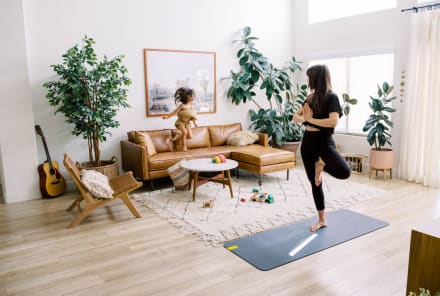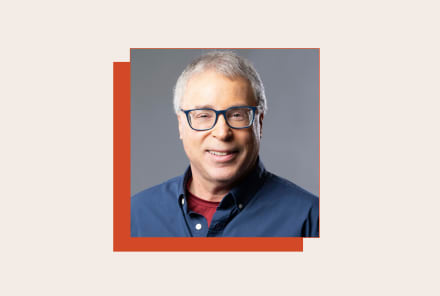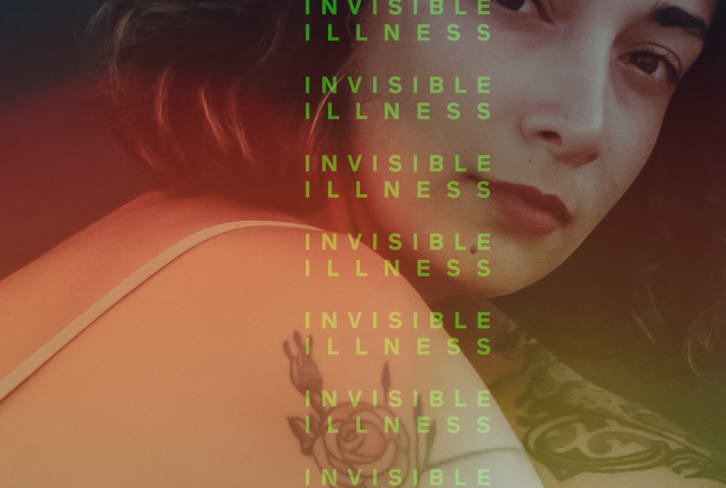Advertisement
These Are The Tools That Helped Me Overcome My PTSD

Post-traumatic stress disorder (PTSD) is a mental illness that can develop after a person experiences or witnesses a terrifying or life-threatening event or series of events. We usually associate the disorder with war, or acts of terror and extreme violence, but a difficult childbirth, a car accident, the death of a loved one, chronic illness, or emotional abuse can also cause PTSD.
The condition encompasses a range of symptoms and can be different for everyone. Some people experience flashbacks while others have panic attacks. Depression and anxiety are hallmarks, and those with PTSD may feel the need to avoid people, places, and things that can act as "triggers" of their often debilitating symptoms.
When I was diagnosed with post-traumatic stress disorder, I barely reacted. The recent birth of my daughter had been traumatic; the baby and I had almost died. A few short weeks after my daughter was born, my father unexpectedly passed away. Caring for an infant with health problems while grieving for my father, with whom I’d been very close, proved too stressful. I had trouble sleeping, and when I slept, I suffered from nightmares as well as flashbacks of my daughter’s difficult delivery. I avoided places, activities, and people that I’d enjoyed before, and my thinking was extremely negative. I feared that more bad things were right around the corner.
One of the hardest parts of dealing with PTSD is how hard we can be on ourselves. We invalidate our own feelings, thinking that we have no right to feel this way. Others probably have it worse, we tell ourselves. There is absolutely no shame in suffering from post-traumatic stress disorder; it doesn’t matter if your condition stemmed from an abusive boyfriend or from being a prisoner of war. We cannot compare our experiences to others. Everyone’s bodies and minds react to events differently, and you didn’t get PTSD from not being strong enough. Mental illness should never be stigmatized like that.
An estimated 24.4 million people in American alone suffer from PTSD, with women being twice as likely as men to experience the condition. Sadly, it's very common in our society, but it’s important to know that there are tools to help you heal. If I was able to find my way to bliss, I hope that other people can. And the first step is to make the choice to heal.
For me, actually getting diagnosed with PTSD was a turning point that led me in the direction of healing. Here are the holistic tools that finally helped me overcome my PTSD:
1. Taking my medication, as prescribed.
I took the medication that I was prescribed because it allowed me to dip my toes back into the pool of life, and it helped to lift the fog that had been hanging over me. Eventually, I started looking for a different, more sustainable path to healing. Medication provided a bridge and helped me begin to feel better, but in order to fully overcome my PTSD, I needed to take an integrative approach that addressed my mind, body, and spirit. When we care for all parts of ourselves, our healing can be holistic and transformative. For me, it was. By detoxifying my mind and my body through meditation, yoga, and nutrition, I was able to find a long-term solution to deal with my trauma.
2. Calming my mind with meditation.
Meditation taught me to prioritize myself, and a consistent meditation practice can have life-changing effects that alter the way we react to unavoidable negative events. Instead of panicking and retreating, I have come to a place of calm, acceptance, and gratitude that allows me to make healthy decisions and deal with obstacles—instead of freaking out. Meditation has cleansed my mind of fear, self-bashing thoughts, and dread. I now have a much more positive outlook.
3. Phasing out processed and inflammatory foods.
Nutrition is a key component in any healing regimen, but it’s especially important when we’re trying to help our bodies deal with stress and trauma. Make incremental changes, including less-processed foods, fewer toxins, and no hormones (check all labels in the grocery store). I recommend an anti-inflammatory diet that boosts immunity, because reducing inflammation in the body actually helps to reduce stress on your brain. If a radical change in your diet seems like too much right now, start small by cutting back on foods that don’t support healing, and include as many more natural, whole foods in your meals as you can. You’ll soon notice a difference in the way you feel and that will motivate you to make more and more healthy changes in the way you eat and live.
4. Moving my body in whatever way felt good.
Eating well and meditating regularly can make a huge difference, but our bodies also crave exercise. We were designed to move, and when we don’t, we can’t fully heal. Any kind of exercise helps; do what you most love, whether it’s swimming, working out at the gym, or simply walking in your neighborhood, but incorporate yoga into your weekly routine as well.
5. Starting a yoga practice, no matter my flexibility level.
Many people think they can’t do yoga because they aren’t flexible, or they feel like it’s too complicated, and they feel self-conscious, but the magic of yoga is in its adaptability. You get to make your yoga practice suit you. There are no prerequisites to yoga. Anyone can do it. Start small, do exactly what you can each day and no more than that. Yoga is more than just exercise. It’s a moving meditation that was designed thousands of years ago to both heal the body, and to retrain the brain, putting your mind, body, and spirit back into balance. The benefits of a consistent yoga practice to all areas of life are numerous and dramatic.
6. Making time for quiet.
One of the most important things you can do when you have PTSD is disconnect from stimulation. Make quiet time for yourself a major priority, even if it’s just five minutes a day at first.
7. Focusing on breathwork.
When you’re on fire, they say to stop, drop, and roll, but with PTSD and anxiety disorders, it’s like your brain is on fire, so you have to stop, drop, and breathe! Our breath is a built-in stress reliever. Take long, slow breaths to bring yourself out of fight-or-flight mode and bring your nervous system back into balance.
8. Developing a gratitude practice.
In a journal, write five specific things that you are grateful for today. What did you see, smell, hear, experience? Work on creating a gratitude mindset. Appreciation for the many blessings in your life will give you a sense of peace.
9. Helping others to cultivate a sense of purpose.
Helping others is a proven way to feel better, and there are so many ways to help. You can donate time, money, or skills. Volunteer for an event or a charity that means something to you and gives you a sense of purpose. You could start an enjoyable part-time job, give tours at a museum, or even adopt a rescue pet. Maybe gardening or beach cleanups make you feel good, or it could be something as simple as bringing a meal to a sick friend or cleaning house for a new mom. Any way that you can help anyone (or anything) will do wonders for your overall well-being.
Suffering from PTSD is overwhelming, but these tools can help you heal. I began my journey with small, easily doable steps and gradually built up my mental and physical health with a holistic and integrative approach that provided me with sustainable long-term relief. Visit your doctor, take pride in your strength and desire to heal, be mindful of your body’s needs for nutrition and movement, and begin to cultivate calmness.
Ever wonder why breathwork is so great at calming anxiety? Well, it has everything to do with the vagus nerve.
Watch Next
Enjoy some of our favorite clips from classes
Enjoy some of our favorite clips from classes
What Is Meditation?
Mindfulness/Spirituality | Light Watkins
Box Breathing
Mindfulness/Spirituality | Gwen Dittmar
What Breathwork Can Address
Mindfulness/Spirituality | Gwen Dittmar
The 8 Limbs of Yoga - What is Asana?
Yoga | Caley Alyssa
Two Standing Postures to Open Up Tight Hips
Yoga | Caley Alyssa
How Plants Can Optimize Athletic Performance
Nutrition | Rich Roll
What to Eat Before a Workout
Nutrition | Rich Roll
How Ayurveda Helps Us Navigate Modern Life
Nutrition | Sahara Rose
Messages About Love & Relationships
Love & Relationships | Esther Perel
Love Languages
Love & Relationships | Esther Perel

















